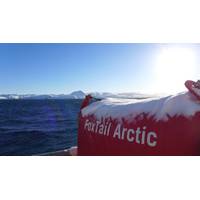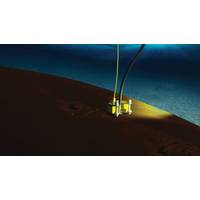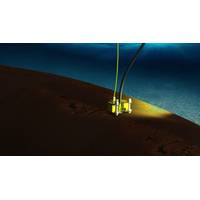
Norwegian Firms Establishes Freight Route for Uncrewed Cargo Vessels
Norwegian firm Maritime Robotics said it has been given the green light to establish a freight route for its uncrewed vessels in the Trondheimsfjord in Norway.With approval from the Norwegian Coastal Administration and the Norwegian Maritime Directorate, Maritime Robotics will now operate its environmentally friendly and sustainable uncrewed surface vehicles (USV) to transport goods and equipment between its headquarters in Trondheim and production premises in Vanvikan, located on the Fosenhalvøya.Maritime Robotics’ uncrewed surface vehicle, the Mariner, has already been deployed on the

Oil Spill Cleanup Device Tailored for the Arctic
seawater using its sorbent mops. The system is capable of salvaging large quantities of oil after a spill, without much unnecessary water.Tonsberg-based H. Henriksen began to develop the arctic ready system through the Norwegian Clean Seas Association for Operating Companies (NOFO) and Norwegian Coastal Administration (NCA) Oil Spill Response 2015 program, which invited vendors to develop new commercially avilable technologies to handle oil spill recovery in arctic conditions. H. Henriksen’s Arctic FoxTail proposal was accepted, and protype development started in 2016.The scope of the project
Oil Recovered from Sunken Ship Thorco Cloud
. This served as the work platform during the salvage of the trapped fuel by using the Moskito hot tap tool developed in Norway by Miko Marine. Thousands of sunken ships along the coast of Norway represent pollution dangers from the fuel trapped inside their hulls. This prompted the Norwegian Coastal Administration to invite Miko Marine to devise a method for removing it. The result was a unique tapping machine, known as the Moskito, that uses magnets to attach itself to the wreck before drilling through the hull plating and into the relevant tank. A ball valve and hose is connected to the drill

New Tool Recovers Oil from Sunken Wrecks
to the surface. Being such a compact device it is also easy to use multiple units close together if a higher rate of extraction is required. Emerging from R&D Moskito arose from a research and development project launched by Miko Marine in 2012. It attracted the interest of the Norwegian Coastal Administration (NCA) which had been grappling with the same pollution problem being caused by spontaneous leaks from sunken wrecks around Norway’s coastline. NCA decided to support Miko Marine’s quest to find a solution and the two organizations joined forces with the backing of Innovation

Moskito to Recover Oil from Sunken Wrecks
to the surface. Being such a compact device it is also easy to use multiple units close together if a higher rate of extraction is required. Emerging from R&D Moskito arose from a research and development project launched by Miko Marine in 2012. It attracted the interest of the Norwegian Coastal Administration (NCA) which had been grappling with the same pollution problem being caused by spontaneous leaks from sunken wrecks around Norway’s coastline. NCA decided to support Miko Marine’s quest to find a solution and the two organizations joined forces with the backing of Innovation

New Tool for Recovering Oil from Sunken Wrecks
returned to the surface. Being such a compact device it is also easy to use multiple units close together if a higher rate of extraction is required. The Moskito arose from a research and development project launched by Miko Marine in 2012. It quickly attracted the interest of the Norwegian Coastal Administration (NCA) which had been grappling with the same pollution problem being caused by spontaneous leaks from sunken wrecks around Norway’s coastline. Having no answer to the problem the NCA decided to support Miko Marine’s quest to find a solution and the two organizations joined


 February 2024
February 2024





